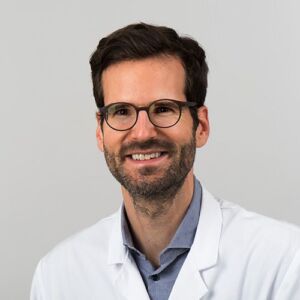Procedure
Diagnosis
The suspicion or confirmed diagnosis of a malignant change in the mucous membrane as well as the specific clarification of symptoms such as pain, swelling or difficulty swallowing lead to the patient being referred to our special consultation hour for tumor diseases.
Presentation in the tumor board
First, a further, standardized diagnostic clarification is carried out as a basis for the subsequent presentation of the findings in the interdisciplinary tumor board of the Tumor Center. Taking into account the latest clinical and research findings, the most suitable therapy recommendation for the individual patient with his or her individual risk profile is developed, which we immediately explain to our patients in detail in a personal consultation.
Therapy methods
In principle, apart from highly specialized forms of therapy for certain tumour types, surgery, radiotherapy and chemotherapy can be considered either alone or in combination. Under certain conditions, photodynamic therapy (“surgery with light”) can also be used. We offer patients with high-risk oral mucosal changes regular check-ups in our interdisciplinary oral mucosal consultation.
Progress in early diagnostics
In recent years, we have made significant progress in the treatment of patients with head and neck tumors, particularly in diagnostics and early diagnosis as well as functional rehabilitation. The combination of modern, detailed imaging examination techniques with intraoperative 3D navigation enables us to surgically remove tumors with the utmost precision. Thanks to these technologies, we can now also clearly record the surgical resection margins in the image data set and make this valuable information available for the histological examination and the radiotherapists providing further treatment to optimize their radiation planning.
After the procedure
The rapid restoration of aesthetics and function is crucial for the quality of life after a tumor operation on the facial skull. If the tissue defect created after tumor removal can no longer be closed locally, microvascular tissue transfer is now the standard procedure. Tissue is removed from a distant part of the body, transferred to the head and neck area and reconnected to the bloodstream there. We are a global pioneer in the replacement of bony structures with patient-specific implants. By combining computer-assisted surgery with modern CAD/CAM technologies, implants for the replacement of bony structures of the midface and orbital walls can be manufactured with such precision that, for example, the risk of post-operative visual impairment can be minimized. This rapidly developing technology now also allows us to insert dental implants with the required precision at the same time as a microvascular reconstruction. In collaboration with the Center for Dental Medicine at the University of Zurich and in close coordination with the family dentist, the total treatment time until the prosthesis is fitted is reduced by many months.
Aftercare
We offer all our patients regular follow-up checks, the intervals of which are tailored to the individual risk profile. This means that the interdisciplinary expertise of the entire Head and Neck Tumor Center is available to our patients at all times.


